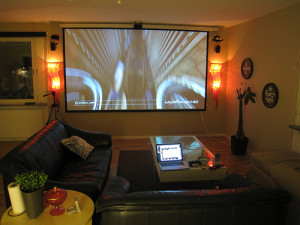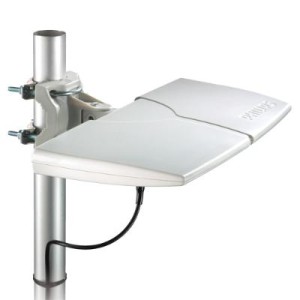 Bring your home theater to a new level with an HDTV antenna. It brings the full impact of HD to your screen.
Bring your home theater to a new level with an HDTV antenna. It brings the full impact of HD to your screen.
Even with one of the newer 4K TVs you may not be seeing all the amazing visuals due to the way HD is being broadcast into your home.
Compressed signals
Most local TV stations continue to broadcast using SD (standard-definition), currently the industry standard. They will break away from that to broadcast special events (such as the Super Bowl or the Oscars) in high-definition. Even then we are not getting the full effect due to the delivery method of cable or satellite. In order to get a signal through cable or satellite it is compressed. The instant an image is compressed it get softened and all the HD qualities we were after are gone. Many people are switching to an HDTV antenna that pulls the image over-the-air (OTA). OTA images are crisper and clearer because they are never compressed in the first place.
No blackouts
Wondering why you can’t get certain channels or watch certain games. It’s not the signal but the various contracts and agreements made between cable and satellite providers to create blackout periods. An HDTV antenna doesn’t discriminate. OTA programs are free and can’t be blacked out. With the right HDTV antenna and location you can have great reception and received out-of-town channels with programs not blacked-out.
 New breed
New breed
HDTV antenna have come a long way since the days of rabbit ears on the TV or aluminium skeletons on the roof. HDTV antennas are thin, lightweight and unobtrusive usually with a flat rectangular design that can be installed flat, upright or mounted on the wall.
You’ll want an antenna able to handle both VHF and UHF signals since Digital TV signals are broadcast in two different frequencies:
- VHF (Very High Frequency) are the low-band channels 2 through 13
- UHF (Ultra High Frequency) are the high band channels 14 and up.
New antennas
Omni-directional with a multi-directional antenna can receive signals from all directions and often provide better reception. You will want a multi-directional antenna if have a lot of obstacles in your area. If you live far away from the transmitter but in relatively flat terrain, an uni-directional antenna picks up signals from greater distances in only one direction with little interference. If the signal is very weak boost the signal with an amplified antenna.
Indoor vs. outdoor antennas
Outdoor antenna are always going to work better than indoor antenna simply because there are fewer obstacles. Indoors you are restricted to the height of your tallest wall, which may not be high enough to be above outdoor bushes and trees. This could result in dropouts when the wind blows. There may also be interference from computers, cordless phone and other WiFi devices.
Where to aim
Before choosing your antenna, you’ll need to know the distance and direction of your local TV station transmitter. Mountains, rocky terrain and even tall skyscrapers can block transmissions while the farther away you are, the stronger your signal needs to be.
Check out these online services that let you find channels and transmitter in your area.
- TV Fool Also provides the minimum height requirements.
- Pagear.com
- Digital TV in Canada
Tips for older models
Any HDTV bought after 2007 has a built-in tuner for receiving OTA broadcasts. Older TVs that still receive analog signals will need a separate HDTV tuner. Often your satellite service come with a built in OTA HD tuner which means you lose your digital signal if you disconnect your service. Instead you can install your own Digital ATSC Converter Box that lets you analog to digital with easy HDMI connections. Lutema sells a reasonably priced converter that works with most TV sets.
Resources
Check out the community forums to help you with your HDTV antenna:
- fixyourdlp
- AVS
- Antennas Direct
- HDTV Over-The-Air (OTA) Digital TV
- DTVUsa
- Digital Home.ca
It takes a bit of work to set-up and find the perfect location but receiving a crystal-clear high-definition picture with no cable charges is worth in the end.

